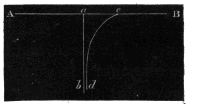Article contents
XV. Experimental Researches regarding certain Vibrations which take place between Metallic Masses having different Temperatures
Published online by Cambridge University Press: 17 January 2013
Extract
1. On the 17th January 1831, Mr Arthur Trevelyan communicated to the Royal Society of Edinburgh a paper, entitled “Notice regarding some phenomena observed during the Cooling of certain Metals placed in contact with Lead.” This was the first account published of the remarkable discovery made by that gentleman, of a most curious class of phenomena, which till then was unknown to the scientific world. This paper was afterwards published, with some additions, in the 12th volume of the Transactions of that body, under the title of “Notice regarding some Observations on the Vibrations of Heated Metals.”
2. Mr Trevelyan had, in February 1829, first observed the phenomena just alluded to, which consist in certain tremulous motions accompanied by sounds, often highly musical, excited in many metals while hot, placed in contact with lead or tin, at a lower temperature.
- Type
- Research Article
- Information
- Earth and Environmental Science Transactions of The Royal Society of Edinburgh , Volume 12 , Issue 2 , 1834 , pp. 429 - 461
- Copyright
- Copyright © Royal Society of Edinburgh 1834
References
page 432 note * Lecture at the Royal Institution April 1831, and Royal Institution Journal, No. IV. N. S.
page 435 note * I need hardly state it as an exception that I have used galena (the sulphuret of lead) as a block, with success, instead of metallic lead.
page 444 note * The analogy to which I allude was observed by me in autumn 1831; and the experiments described in the paper just quoted were made between that period and February 1832.
page 444 note † On the subject of the conducting powers for electricity, a beautiful illustration of the application of new discoveries in science to branches already known, has occurred to me since forming these lists. Mr Faraday has shewn, that, according to his beautiful Theory of Magnetism by rotation, the Transient Magnetic Energy (as it was formerly termed) of different Metals, should bear a relation to their conducting power of metals for electricity. This is most remarkably confirmed by the following Table, given by Mr Harris in the Philosophical Transactions for 1831, which most strikingly confirms the arrangement of conductors which I have given in the text.

page 445 note * It is most probably from the great specific heat of iron that it stands so high in the first column.
page 454 note * New Series, No. IV. p. 119, 122.
page 456 note * For such small differences of temperature the Newtonian law may be viewed as absolutely accurate.
page 456 note † In fact, let AB represent the surface of the body, receiving heat at the point a; and let a b be a line normal to the surface, consequently the expansion of which is to produce the elevation at the point a. The ordinates of the curve cd may represent the acquired temperatures, and the total acquired temperature will be denoted by the area of the curve, to which likewise the expansion will be proportional without regard to its particular form (the distribution of heat), which will vary with the conducting power; and although it is very possible that the ordinate ac of the curve may be greatest in a bad conductor, it is very easy to see that the total area never can.

page 458 note * 1832, No. III., p. 466.
page 458 note † New Series, No. XI.
page 460 note * I might point out another analogy in the sudden and forcible action of the hydraulic ram, where the accumulated effect of small impulses produces sudden and intense results, but I am afraid of extending unwarrantably such speculative analogies. The two preceding paragraphs of this paper have been somewhat modified since it was first read.
page 461 note * Annales de Chimie et de Physique, xxix. 57. and 107.
page 461 note † See several successive articles in the Bulletin des Sciences Mathematiques, tom. ix. See also Pouillet, Elemens de Physique.
- 1
- Cited by




